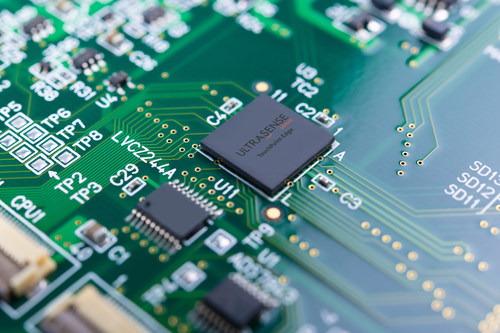
0755-83687076
Author: admin Time:2021-12-15 Click:
According to foreign media reports, UltraSense Systems, a company specializing in ultrasonic sensors, has announced the launch of its next-generation multimodal touch sensing solution, TouchPoint Edge, designed to replace arrays of mechanical buttons at a lower cost beneath surface materials such as metal, glass, and plastic, and to further drive the UI/UX paradigm shift from mechanical to digital interfaces for smart surfaces.
TouchPoint Edge is a fully integrated system-on-chip (SoC) that can replicate the touch input of mechanical buttons by directly sensing eight independent UltraSense ultrasonic + force-sensitive TouchPoint P sensors. TouchPoint Edge also utilizes an embedded, real-time neural touch engine (NTE) to distinguish between intentional and unintentional touches, eliminating extreme cases and providing the input accuracy of mechanical buttons.

In the coming years, smart surfaces will further transform the way humans interact with products. Smart surfaces refer to solid surfaces with backlighting that display touch positions to the user. This UI/UX paradigm shift began more than a decade ago with the removal of mechanical keyboards from smartphones, which now only require tapping on capacitive screens. However, not all smart surfaces are capacitive displays. UltraSense System's first-generation sensor, TouchPoint Z, has improved the user experience (UX) of smartphones, electric toothbrushes, household appliances, and car interior ceiling lights by removing mechanical buttons in an economical and efficient manner, marking another paradigm shift.
TouchPoint Edge significantly enhances the user experience of applications with numerous mechanical buttons. For example, it removes multiple mechanical buttons from a car's cockpit, including steering wheel, HVAC, and lighting central and overhead control consoles, door panels with seat and window controls, and even buttons embedded in soft leather surfaces or foam seats, to create a more user-friendly interface. Other applications include touch panels on appliances, smart locks, security access control panels, and elevator button panels.
Human-machine interfaces are highly subjective and complex beneath solid surfaces, making it difficult to replicate the feel of mechanical buttons. It's not just about pressing the surface harder than a threshold to register pressure. When users apply force to mechanical buttons, this force changes over time due to factors such as friction, hysteresis, air gaps, and spring characteristics, resulting in a multitude of nonlinear responses. Simple piezoresistive or MEMS force-touch strain sensors with some algorithms and a few trigger thresholds cannot effectively and accurately replicate the user experience of mechanical buttons and eliminate false triggers.
TouchPoint Edge features multimodal sensing and an embedded neural touch engine that can handle on-chip machine learning and neural network algorithms, allowing it to understand user intent. Like TouchPoint Z, TouchPoint Edge captures the unique patterns of users pressing surface materials. Then, it uses this dataset to train a neural network to learn and distinguish users' pressing patterns, which is different from traditional algorithms that rely on a single force threshold. Once TouchPoint Edge is trained and optimized for a user's pressing patterns, it can recognize the most natural response when pressing a button. Additionally, the unique sensor array design of the TouchPoint P transducer captures a unique multichannel dataset in a smaller local area, much like placing mechanical buttons, greatly improving the performance of neural network button pressing replication. This neural touch engine improves and enhances the user experience by integrating closely with the TouchPoint P's proprietary sensor design, providing optimal performance. Finally, integrating the neural touch engine into TouchPoint Edge significantly improves system efficiency. Compared to offloading the same system to an external ultra-low power microcontroller, the execution speed of neural processing in TouchPoint Edge can be increased by 27 times and power consumption reduced by 80%.
Main features of TouchPoint Edge: neural touch engine for machine learning and convolutional neural network processing; open interface for neural touch engine to handle non-proprietary or even non-touch sensor inputs (e.g., inertial, piezoelectric, position, force, etc.); supports direct drive and sensing of eight independent multimodal TouchPoint P sensors; uses an embedded MCU and ALU for algorithm processing and sensor post-processing; integrated analog front-end (AFE); configurable power management and frame rate; includes I2C and UART serial interfaces; has two GPIOs for direct connections to haptic, LED, PMIC, etc.; operating range from -40°C to +105°C; uses a 3.5mm x 3.5mm x 0.49mm WLCSP package.
Main features of TouchPoint P: multimodal independent piezoelectric transducer for ultrasonic + strain sensing; operating range from -40°C to +105°C; uses a 2.6mm x 1.4mm x 0.49mm QFN package.